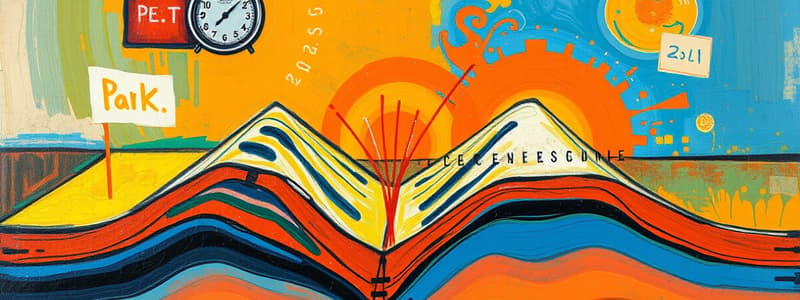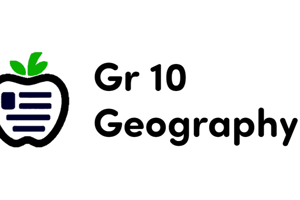Podcast
Questions and Answers
Seismometers are used to detect and record vibrations caused by seismic waves.
Seismometers are used to detect and record vibrations caused by seismic waves.
True (A)
The Richter Scale measures earthquake intensity based on the amount of damage caused.
The Richter Scale measures earthquake intensity based on the amount of damage caused.
False (B)
The Moment Magnitude Scale (Mw) is less accurate than the Richter Scale for large earthquakes.
The Moment Magnitude Scale (Mw) is less accurate than the Richter Scale for large earthquakes.
False (B)
Volcanic activity can cause earthquakes due to magma movement beneath the Earth's surface.
Volcanic activity can cause earthquakes due to magma movement beneath the Earth's surface.
S-Waves can travel through both solids and liquids.
S-Waves can travel through both solids and liquids.
Transform boundaries occur when tectonic plates move apart.
Transform boundaries occur when tectonic plates move apart.
Surface waves are the fastest seismic waves and cause the least damage.
Surface waves are the fastest seismic waves and cause the least damage.
Induced earthquakes can result from human activities like fracking.
Induced earthquakes can result from human activities like fracking.
The Modified Mercalli Intensity Scale measures the magnitude of an earthquake.
The Modified Mercalli Intensity Scale measures the magnitude of an earthquake.
P-Waves cause particles to move in the same direction as the wave.
P-Waves cause particles to move in the same direction as the wave.
Flashcards are hidden until you start studying
Study Notes
Earthquake Measurement
- Seismometers: Instruments that detect and record the vibrations caused by seismic waves.
- Richter Scale: Measures the magnitude of an earthquake based on the amplitude of seismic waves; logarithmic scale (each whole number increase represents a tenfold increase in amplitude).
- Moment Magnitude Scale (Mw): More accurate than Richter for large earthquakes; considers the fault area and amount of slip.
- Modified Mercalli Intensity Scale: Measures the intensity of shaking and damage on a scale from I (not felt) to XII (total destruction).
- Seismographs: Devices that create a visual record of seismic activity, displaying wave patterns.
Causes of Earthquakes
- Tectonic Plate Movements: Most earthquakes occur at plate boundaries due to:
- Transform Boundaries: Plates slide past each other (e.g., San Andreas Fault).
- Convergent Boundaries: One plate subducts beneath another (e.g., Cascadia Subduction Zone).
- Divergent Boundaries: Plates move apart (e.g., Mid-Atlantic Ridge).
- Volcanic Activity: Earthquakes can occur due to magma movement beneath the Earth's surface.
- Human Activities: Induced earthquakes can result from mining, reservoir-induced seismicity, geothermal extraction, and hydraulic fracturing (fracking).
- Faults: Stress accumulation along faults leads to sudden releases of energy causing earthquakes.
Seismic Waves
- Types of Seismic Waves:
- P-Waves (Primary Waves):
- Fastest seismic waves; travel through solids, liquids, and gases.
- Cause particles to move in the same direction as the wave.
- S-Waves (Secondary Waves):
- Slower than P-waves; travel only through solids.
- Cause particle movement perpendicular to the wave direction.
- Surface Waves:
- Travel along the Earth's surface; slower than both P and S waves.
- Cause the most damage due to their larger amplitude and longer duration.
- P-Waves (Primary Waves):
- Wave Propagation: Seismic waves radiate outward from the earthquake's focus (hypocenter) and can be detected by seismometers at various distances.
- Reflection and Refraction: Seismic waves change speed and direction when they encounter different materials within the Earth, aiding in geological study and exploration.
Earthquake Measurement
- Seismometers detect vibrations from seismic waves, crucial for earthquake monitoring.
- Richter Scale quantifies earthquake magnitude, using a logarithmic approach; each whole number increase indicates a tenfold rise in amplitude.
- Moment Magnitude Scale (Mw) provides a more reliable measurement for larger quakes; it assesses fault size and slip magnitude.
- Modified Mercalli Intensity Scale assesses earthquake intensity from I (not felt) to XII (total destruction), based on observed damage and shaking.
- Seismographs visually document seismic activity by showcasing the patterns of waves.
Causes of Earthquakes
- Tectonic Plate Movements:
- Occur primarily at plate boundaries, leading to various interactions:
- Transform Boundaries involve lateral sliding (e.g., the San Andreas Fault).
- Convergent Boundaries feature one plate's subduction beneath another (e.g., Cascadia Subduction Zone).
- Divergent Boundaries see plates moving apart (e.g., Mid-Atlantic Ridge).
- Occur primarily at plate boundaries, leading to various interactions:
- Volcanic Activity can trigger earthquakes due to magma movement within the Earth's crust.
- Human Activities may induce seismic events encompassing mining operations, reservoir creation, geothermal extraction, and hydraulic fracturing.
- Faults store stress which, when released, causes earthquakes.
Seismic Waves
- Types of Seismic Waves:
- P-Waves (Primary Waves) are the fastest, traveling through solids, liquids, and gases, causing particles to oscillate in the same direction as the wave.
- S-Waves (Secondary Waves) are slower and can only pass through solids, causing particles to move perpendicular to the wave direction.
- Surface Waves move along the Earth's surface and typically inflict the most destruction due to their greater amplitude and sustained duration.
- Wave Propagation: Seismic waves disperse from the earthquake’s focus (hypocenter), detectable by seismometers over varying distances.
- Reflection and Refraction: Seismic waves alter speed and direction when encountering different Earth materials, aiding geological research and resource exploration.
Studying That Suits You
Use AI to generate personalized quizzes and flashcards to suit your learning preferences.





